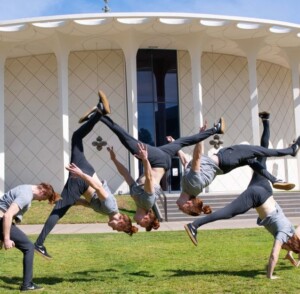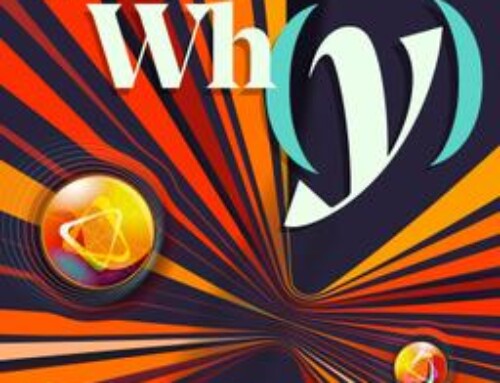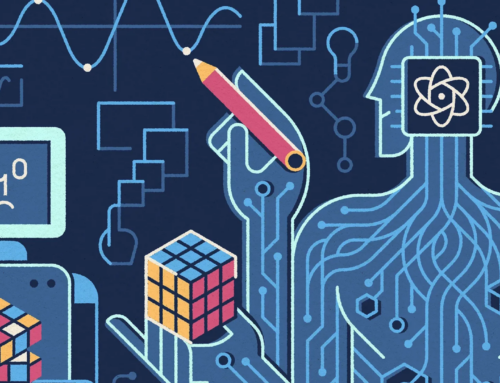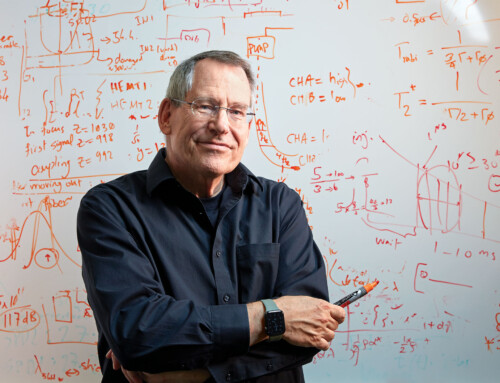Read the article Quantum’s Hub in the summer 2022 issue of Caltech magazine for insight into how IQIM developed at Caltech. The article includes comments from interviews conducted by science historian David Zierler, now director of the Caltech Heritage Project. John Preskill arrived at Caltech in 1983 planning to continue his work in particle physics and quantum field theory. By the mid-1990’s Preskill had taken the leap to quantum information theory.
In quantum superposition, subatomic particles can act like waves and occupy many places at once—a little like how Caltech graduate student Piero Chiappina can be seen here performing every stage of a backflip at once.
“I realized with the discovery of Shor’s algorithm that it really meant there was a big difference between what problems we’d be able to solve and which ones we’d never be able to solve with computing technology because it’s a quantum world instead of a classical one.”
In the late 1990s, Preskill and H. J. “Jeff” Kimble, now the William L. Valentine Professor of Physics, Emeritus, received a grant from the Defense Advanced Research Projects Agency (DARPA), which was interested in quantum computing’s potential applications in cryptography. Preskill and Kimble then hired Alexei Kitaev, as a yearlong visitor.
In 2000, Preskill and Kimble received a grant from the National Science Foundation, which they used to form the Institute for Quantum Information (IQI).
Dave Bacon (BS ’97), a former IQI postdoc, remembered IQI as a leading hub for quantum computing research:
“John literally started inviting everybody in the field to come visit. … It was like all of quantum computing was flowing through that place, and I was in the main place we’d have the group meetings,” he said in a Heritage Project interview. “It felt like everybody would come in and give a talk right outside my office. It was perfect.”
By 2011, advances in quantum computing hardware, such as superconducting circuits and qubits (the quantum mechanical analogue of a classical bit) gave Preskill and Kimble the impetus to apply for more NSF funding as a means to broaden the IQI’s scope to include experimental work. They received that funding and, in 2011, changed its name to the Institute for Quantum Information and Matter.
Spiros Michalakis, staff researcher and manager of outreach at IQIM, described this name change in a recent Heritage Project interview as a “visionary move,” one that is still paying off:
“We attach ‘M’—matter—and it really mattered because … we started to have conversations with how you can implement certain things and how you can convert some of the theories into experiments.
“IQIM brought together theorists and experimentalists with a vision toward a transformative future for all. Amazingly, we are reaping the benefits of that vision already, as the era of quantum information science and engineering unfolds before our eyes at an unprecedented pace. What an exciting time to be alive.”
In addition to the full article, there are links to the Caltech Science Exchange interview with John Preskill Conversations on the Quantum World: Why We Want Quantum Computers, and the 2013 video Quantum Computers Animated, produced by IQIM in partnership with PhD Comics. The video features IQIM’s John Preskill and Spiros Michalakis.




